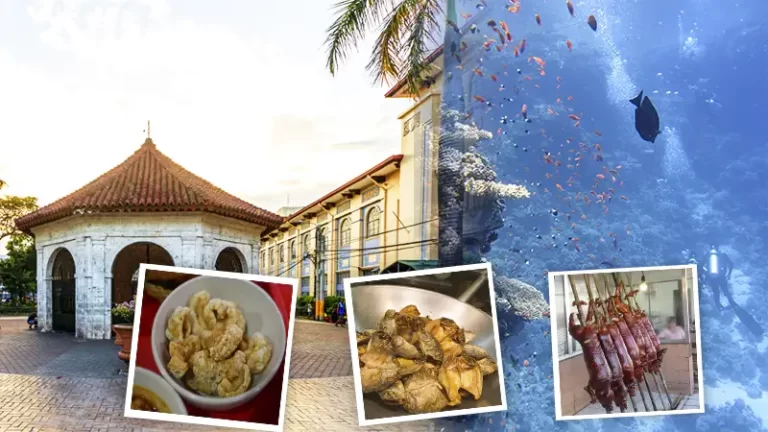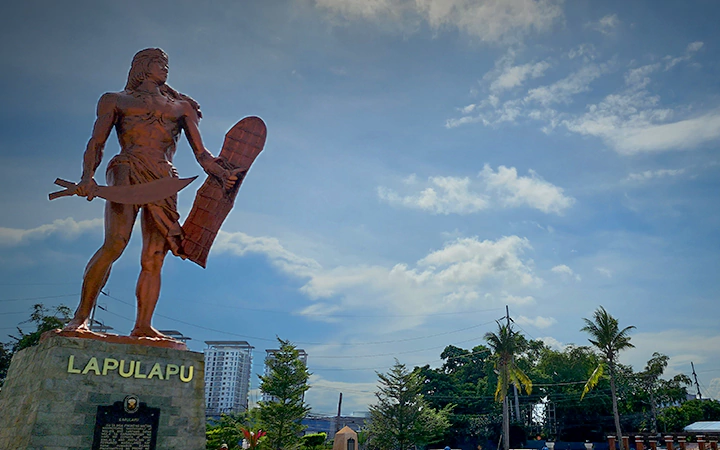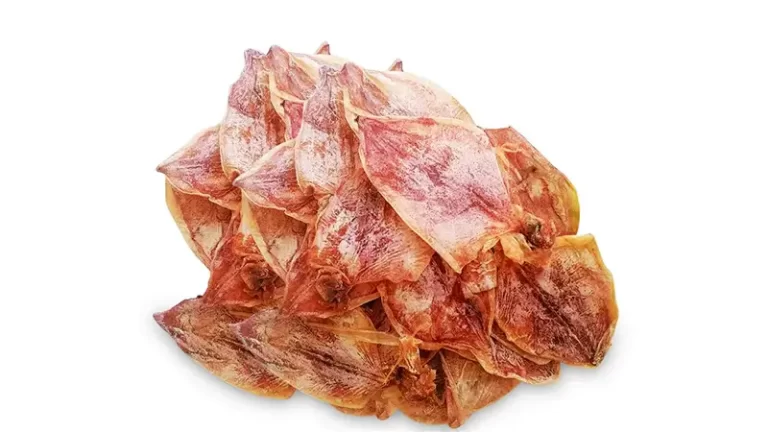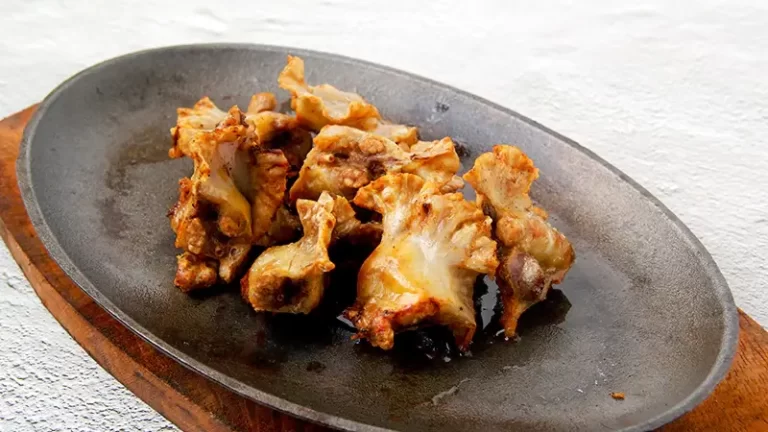Sausages are one of those dishes that seem to appear in every cuisine, no matter the culture or country.
Throughout the world, people have found that the best way to utilize the more affordable cuts of meat is to grind them, add spices and herbs, and encase them to make sausages.
Filipino cuisine is no exception when it comes to sausages. A trip to the Philippines will most probably have you encounter, not just one, but most likely several varieties of the local Philippine chorizo.
Chorizo de Cebu, Vigan Longganisa, Chorizo de Bilbao, Calumpit Longganisa, Chorizo Negrense – you may have heard (or maybe even tasted!) some of these, but are they really different?
What’s the difference between longaniza and chorizo? What’s skinless chorizo? How do you cook them? If you’re someone who’s curious about this, this article is for you!
In this article, we specifically discuss the difference between chorizo vs. longaniza, as well as the difference between Chorizo de Cebu vs. Chorizo de Bilbao.
We also share interesting facts about how they are made, delicious recipes, where to buy them, and more!
Longaniza vs. Chorizo
So, what’s the difference between longaniza and chorizo?
Chorizo is a type of pork-cured meat originating from the Iberian Peninsula. It is a fermented, cured, smoked meat, which may be sliced and eaten without cooking, or added as an ingredient to add flavor to other dishes.
Some may not be fermented and cured, and require cooking before eating.
On the other hand, the term longganisa is derived from the Spanish term “longaniza” which is a type of Spanish sausage.
With the Spanish occupation of the Philippines, the term was introduced into the language and is now the generic word for most local sausages in the Philippines.
There are some regions in the Philippines that refer to local sausages as “chorizo,” but unlike in Spain, where the two sausages have distinctions, it seems to be used interchangeably in the Philippines, depending on the region where one is staying.
They’re easy to confuse as the same because they look and taste very similar, and sometimes it seems as though they can be used interchangeably. But, they are very much different foods, despite their similarities.
So, what’s the difference between longaniza and chorizo? The main difference is actually in what they’re made out of. While longaniza is made out of minced meat, chorizo is made out of ground pork.
You might also notice that longaniza is a bit thinner in texture, while chorizo is a bit thicker – this is due to the differences in the way they are both made.
Now that you know the slight differences in what they are made out of, you might notice that they do, in fact, taste differently, and you might be able to distinguish between them.
Although it’s true that they can basically be used interchangeably in most cases, you’ll find that one or the other works best for certain types of recipes or food combinations.
Skinless Chorizo and Skinless Longaniza. Skinless longganisa and skinless chorizo refer to a type of Filipino sausage without the casing. It is also known as naked sausage.
Chorizo de Cebu vs. Chorizo de Bilbao
Among the many types of Philippine chorizo, two of the most popular are Chorizo de Cebu and Chorizo de Bilbao. But, what exactly are they? And how are they different?
| Chorizo de Cebu | Chorizo de Bilbao | |
| Description | Chorizo de Cebu, also known as longganisa de Cebu, is a Filipino pork sausage originating from Cebu. It is a type of hamonada (sweet) longganisa. They are distinctively red in color due to the use of achuete seeds. Each link is also usually spherical in shape. Cebu chorizo is made from ground pork fat, ground lean pork, salt, sugar, saltpeter, anise liqueur (anisado), black pepper, paprika, garlic, and chilis to taste in a hog casing. Learn more about Chorizo de Cebu here. <link to “Chorizo de Cebu” article> | Chorizo de Bilbao, also known as Chorizo Bilbao, is a type of Filipino pork and beef dry sausage. It is made from top-tier pork seasoned with pimentón, and pepper, and laced with cumin and oregano. Learn more about Chorizo de Bilbao here. <link to “Chorizo de Bilbao” article> |
| Chorizo Calories | How many calories are in Chorizo de Cebu? According to MyNetDiary, 3 links of Chorizo de Cebu contains 265 cal. | How many calories are in Chorizo de Bilbao? According to MenuwithNutrition, Chorizo de Bilbao contains 330 cal. |
How Are Chorizo de Cebu Chorizo de Bilbao are Made?
Curious as to how Chorizo de Cebu Chorizo de Bilbao is Made? The process for making Philippine chorizo can vary from one manufacturer to another, but here is a glimpse at the general process:
How to Make Chorizo de Cebu
Here’s a step-by-step guide to help you make Chorizo de Cebu.
Ingredients:
- 1.2 kilograms of ground pork
- 1 tablespoon coarse salt
- ½ teaspoon Prague powder #1
- 1 teaspoon sodium phosphate
- ¼ cup cold water
- ¼ cup TVP (Textured Vegetable Protein)
- 1 tablespoon Isolate
- ½ teaspoon Carrageenan
- 2 tablespoon sugar
- 6 tablespoon garlic, minced
- 2 tablespoon paprika (for color)
- 3 tablespoon Anise Liqueur
- 1 tablespoon ground black pepper
- 2 tablespoon pineapple juice
- ½ teaspoon meat enhancer (optional)
Instructions:
- In a large bowl that can fit inside your fridge, combine salt, Prague powder, phosphate, Anise liquor, and water.
- Add the Textured Vegetable Protein, Isolate, and Carrageenan.
- Next, add in ground pork, sugar, garlic, paprika, ground black pepper, pineapple juice, and meat enhancer. Mix thoroughly with a large spoon or use plastic gloves to combine it well with your hands.
- Let it marinate in the refrigerator for not more than 12 hours. (Note: Make sure to list down the time, because the mixture will turn sour if marinated for more than the prescribed time in the recipe).
- Wrapping chorizo: Shape it into small round chorizo and wrap each chorizo. It is best to use sausage casings But if it’s not available, you can just shape the mixture over wax or parchment paper.
- Once you’re done, the chorizo is ready for frying.
- Enjoy your homemade Chorizo de Cebu!
How to Make Chorizo de Bilbao
Here’s a step-by-step guide to help you make Chorizo de Bilbao.
Ingredients:
- 1/2 kilo ground beef fatless
- 1/2 kilo pork fatless
- 1/4 kilo pork fat cubed
- 1/4 tsp. saltire
- 2 Tbsp. fine salt
- 2 Tbsp. white sugar
- 3 tsp. ground pepper
- 1 head garlic minced
- 1/4 cup pimenton or Spanish paprika
- 3/4 cup cooking oil
Instructions:
- Brown garlic in oil. Add garlic and oil to the ground beef meat, pork meat, and pork fat.
- Add the rest of the ingredients (except cooking oil) and mix well. Fill in longganisa casing.
- The chorizo should be at least 4 inches long. Keep in the refrigerator for 3 days.
- On the 4th day, place in a pan, cover with water and boil for 10 minutes.
- Prick with a fork to eliminate air bubbles under the skin. Drain.
- Set aside broth. Dry in the sun for a day or dry in the oven with low heat (200 °F) for 2 hours.
- Place again in the pan. Pour back broth (where chorizos were boiled). Add 3/4 cup cooking oil or shortening.
- Simmer until the liquid dries and only the oil is left. Turn several times while cooking.
- Cool and arrange in a container with a cover. Pour in oil. Keep in the refrigerator.
How Do You Cook Philippine Chorizo?
How to cook Chorizo de Cebu? How to cook Chorizo de Bilbao? If you’re looking for different recipes and ways to cook these delicacies, here are some recipes you can try!
Spicy Tomato and Chorizo de Cebu Pasta Bake
Ingredients:
If you enjoy both pasta and Chorizo de Cebu, you’ll definitely love this recipe!
- Chorizo de Cebu
- Onions
- Tomatoes
- Garlic
- Pasta
Instructions:
- Preheat your oven to 392 degrees Fahrenheit and bring a pan of water to boil at the same time.
- In another pan, fry your pieces of chorizo for a few minutes. Then take the chorizo out of the pan and leave it on a pate for later (but leave the chorizo oil that has been left behind in the pan where it is!)
- In the chorizo oil that is left in the pan, cook some onions, tomatoes, garlic, and any other ingredients you want to add. It is very typical to use leftover chorizo oil for cooking other ingredients in the meal, as it adds the chorizo flavoring to everything else!
- Meanwhile, cook the pasta. When finished, drain the pasta and add it to the pan of ingredients.
- Add the chorizo pieces and any other extra seasoning, spices, or herbs you wish.
- Mix everything together so that the pasta absorbs the sauce and flavoring.
- Serve warm and enjoy!
Chorizo de Bilbao and Garlic Spaghetti
Love spaghetti? Here’s another pasta-based recipe, this time with Chorizo de Bilbao!
Ingredients:
- 150 grams of spaghetti or your choice of pasta
- 6 cloves of garlic, minced
- 1 1/2 tablespoon olive oil
- 2-3 pieces chorizo de bilbao, diced (petra and pilar chorizo de bilbao)
- Parmesan cheese, for topping
- White sauce (bechamel sauce) (or use all-purpose cream)
- 1 tablespoon salted butter (anchor)
- 1 tablespoon all-purpose flour
- 1 cup fresh milk (Alaska slim fresh milk)
- 2 cloves garlic, grated
- Salt and pepper
Instructions:
- Prepare ingredients. Mince garlic cloves and dice Chorizo de Bilbao (1 cm x 1cm cubes). Prepare all other ingredients and set aside.
- Prepare the pasta. Cook pasta (spaghetti) for a couple of minutes less than indicated in the package. Boil in water with a little salt and oil. Cook al dente.
- Cook Chorizo de Bilbao and garlic. Heat olive oil in a sautés pan (low heat). Add minced garlic. Let garlic flavor infuse with the oil (30 seconds). Add diced Chorizo de Bilbao and cook until it releases its juices and is a little browned. Try to avoid browning the garlic. Remove from heat and set aside.
- Prepare the white sauce while cooking Chorizo de Bilbao. On low heat, add butter and grated garlic in a saucepan. Let sit for 30 seconds. Add flour and stir continuously until the flour absorbs all the butter (makes a roux). Slowly add milk while continuously stirring to avoid lumps in the sauce. Continue stirring on low heat until the sauce is of desired consistency (a little cream-like in thickness). Note: Skip this part if you’re using All Purpose Cream.
- Dish assembly. Strain white sauce into the Chorizo de Bilbao mixture. Mix in low heat. Taste. Adjust taste with salt and pepper as needed. Toss drained pasta into the mixture and a little parmesan cheese. Transfer to a serving plate, top with some of the Chorizo de Bilbao, and some parmesan cheese, and drizzle a little olive oil on top.
- Serve and enjoy!
How Much Are Chorizo de Cebu and Chorizo de Bilbao?
Depending on the quantity, brand, and where you buy it, prices for Chorizo de Cebu and Chorizo Bilbao can vary.
- Chorizo de Cebu. Chorizo de Cebu prices can range from ₱200 to ₱300 per kilogram.
- Chorizo de Bilbao. Chorizo Bilbao prices can range from about ₱150 to ₱500 per kilogram.
Where to Buy Chorizo de Cebu and Chorizo de Bilbao
You can buy Philippine chorizo like Chorizo de Cebu and Chorizo de Bilbao from most markets, meat shops, and the meat section in grocery stores. You can also find many resellers online, and even on platforms like Shopee and Lazada.
Final Thoughts
When it comes to Philippine chorizo, you definitely won’t go wrong with Chorizo de Cebu and Chorizo de Bilbao!
While they may have slight differences, both of them still taste absolutely delicious. Try them today!















